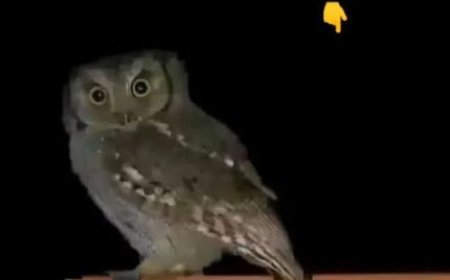Owls: nocturnal mysteries, legends, and virtues
Mysterious, wise, and silent — the owl has long captured the human imagination like few other creatures. Emerging only when the world grows quiet, this nocturnal guardian embodies both fear and fascination. Its haunting call echoes through myths, legends, and folklore across cultures, symbolizing wisdom, transformation, and the thin veil between light and darkness.
1.
When the sun sets and silence settles over the world, a haunting call often rises from the darkness — the deep, rhythmic hoot of an owl. It is a sound that seems to bridge two worlds: the familiar realm of daylight and the mysterious life that awakens after dusk. For centuries, owls have fascinated humankind, occupying a space somewhere between awe and apprehension. They are the silent watchers of the night, symbols of wisdom, mystery, and transformation in countless cultures across time.
In ancient Greece, the owl was sacred to Athena, the goddess of wisdom, and represented intelligence and protection. Among other civilizations, however, its nocturnal cry was seen as an omen of change, a messenger from the spirit world, or even a guardian against evil. Across myths and continents, the owl’s dual nature persists — a creature of both darkness and enlightenment, embodying fear and reverence in equal measure.
Owls: nocturnal mysteries, legends, and virtues
Have you ever heard a mysterious hooting that seems to come from nowhere?
That cry that, for a moment, chills you to the bone and then calls out to you? Behind this voice of the night hides a bird that is both majestic and reserved: the owl. For centuries, it has populated our imagination, sometimes feared, sometimes revered. But what do we really know about this guardian of the night?
Owls and legends: between fear and fascination
Owls have always held a special place in myths around the world since antiquity. In Greece, for example, Athena’s owl represented wisdom and protected Athens. In other places, their nocturnal hooting evoked superstitions: it could be seen as a sign of change, good fortune, or protection for certain households.
These cultural variations reveal our relationship with nature: where the night inspires fear, the owl becomes a sign; where it inspires wonder, it transforms into a guide. Even today, it symbolizes this duality: a messenger between shadow and light, mystery and knowledge.
An extraordinary example of natural engineering
Beyond their symbolism, owls captivate us with their astonishing abilities. Their night vision, adapted to the twilight, allows them to detect the slightest movement. Their remarkably flexible neck can rotate up to 270 degrees ! And what about their flight? With feathers designed to reduce noise, they can move almost silently, perfect for surprising their prey or dazzling night owls.
These feats are the result of millennia of evolution, a true lesson in adaptation. Scientists draw inspiration from them to develop quieter technologies, proving that nature remains the best engineer there is.
Valuable allies for the planet
While they inspire poets, owls are also valuable allies for farmers. By feeding on mice, insects, and small reptiles, they contribute to the natural control of pests . Fewer rodents Tap the p.hoto to v.iew the full r.ecipe.


























